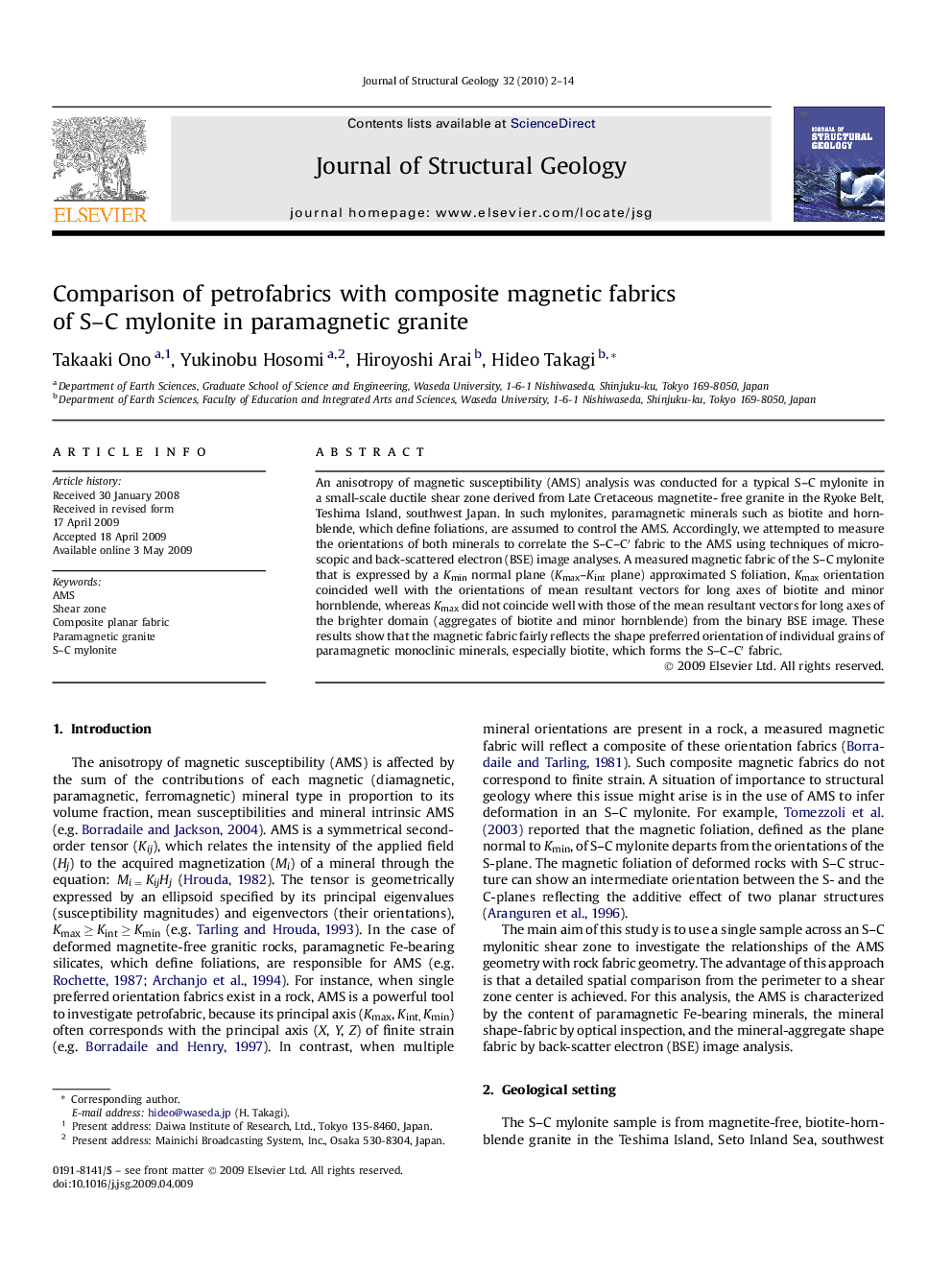| Article ID | Journal | Published Year | Pages | File Type |
|---|---|---|---|---|
| 4734117 | Journal of Structural Geology | 2010 | 13 Pages |
Abstract
An anisotropy of magnetic susceptibility (AMS) analysis was conducted for a typical S-C mylonite in a small-scale ductile shear zone derived from Late Cretaceous magnetite- free granite in the Ryoke Belt, Teshima Island, southwest Japan. In such mylonites, paramagnetic minerals such as biotite and hornblende, which define foliations, are assumed to control the AMS. Accordingly, we attempted to measure the orientations of both minerals to correlate the S-C-Câ² fabric to the AMS using techniques of microscopic and back-scattered electron (BSE) image analyses. A measured magnetic fabric of the S-C mylonite that is expressed by a Kmin normal plane (Kmax-Kint plane) approximated S foliation, Kmax orientation coincided well with the orientations of mean resultant vectors for long axes of biotite and minor hornblende, whereas Kmax did not coincide well with those of the mean resultant vectors for long axes of the brighter domain (aggregates of biotite and minor hornblende) from the binary BSE image. These results show that the magnetic fabric fairly reflects the shape preferred orientation of individual grains of paramagnetic monoclinic minerals, especially biotite, which forms the S-C-Câ² fabric.
Keywords
Related Topics
Physical Sciences and Engineering
Earth and Planetary Sciences
Geology
Authors
Takaaki Ono, Yukinobu Hosomi, Hiroyoshi Arai, Hideo Takagi,
